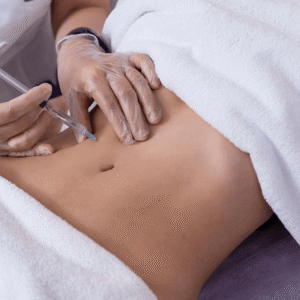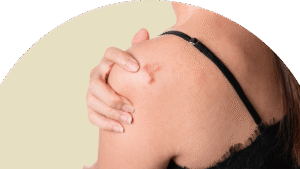
Tennis elbow—also known in medical terms as lateral epicondylitis—is commonly associated with racket sports, especially tennis. However, many individuals in Dubai who have never picked up a racket are experiencing this nagging, painful condition. In today’s fast-paced, work-intensive environment, tennis elbow without playing tennis is becoming increasingly common among office workers, manual laborers, IT professionals, and even healthcare providers. So, what’s causing this surge in non-sport-related cases, and how can it be treated effectively?
At Vitruvian Italian Physiotherapy Center, a leading physiotherapy clinic in Dubai, we see this trend often. This blog explores the reasons behind tennis elbow in non-athletes, its symptoms, and the most effective treatments available in Dubai to get you back to a pain-free lifestyle.
What Is Tennis Elbow?
Tennis elbow is an overuse injury that occurs when the tendons in your elbow are overloaded, usually by repetitive motions of the wrist and arm. While the name suggests it’s exclusive to athletes, especially tennis players, it’s actually more common in professions that involve repeated forearm and hand activity.
The condition primarily affects the extensor carpi radialis brevis (ECRB) muscle, which helps stabilize the wrist. When this muscle is overused or strained repeatedly, tiny tears can form in the tendon where it attaches to the lateral epicondyle (the bony bump on the outside of your elbow), causing pain and inflammation.
Common Causes of Tennis Elbow in Dubai Professionals
In Dubai’s thriving business hub, tennis elbow among non-athletes is frequently triggered by repetitive hand and wrist movements. Here are some of the most common culprits:
1. Office and Desk Jobs
Spending hours typing on a keyboard or using a mouse can strain your forearm muscles. Improper desk ergonomics and poor posture exacerbate the issue, leading to repetitive stress injuries.
2. Manual Labor and Construction Work
Dubai’s construction and labor-intensive sectors often require repeated lifting, twisting, or gripping of tools. These motions can lead to overuse injuries in the elbow.
3. Hairstylists and Beauticians
Constant use of scissors, blow dryers, or cosmetic tools over extended periods places stress on the elbow tendons, especially if ergonomics are ignored.
4. Chefs and Kitchen Staff
Cutting, chopping, and handling heavy cookware regularly involves repetitive motion and gripping, a leading cause of tennis elbow among culinary professionals.
5. Healthcare Providers
Physiotherapists, nurses, and even dentists frequently use their arms in repetitive ways during patient care, sometimes without adequate muscle recovery.
6. Fitness Enthusiasts & Personal Trainers
Even though they’re not playing tennis, repetitive lifting of weights—especially with poor form—can result in tennis elbow in gym-goers.
Symptoms of Tennis Elbow Without Sports
Even in the absence of athletic activity, the symptoms of tennis elbow remain largely the same:
-
Pain or burning sensation on the outside of the elbow
-
Weak grip strength
-
Discomfort when lifting objects, opening doors, or shaking hands
-
Increased pain during wrist extension or gripping
The symptoms often develop gradually, making early diagnosis difficult unless you consult an expert.
Diagnosis of Non-Athletic Tennis Elbow
At Vitruvian Italian Physiotherapy Center, we use a combination of clinical assessment and non-invasive diagnostic tools to confirm tennis elbow. The assessment includes:
-
Medical history review
-
Physical examination focusing on muscle and joint function
-
Functional tests that replicate movements causing pain
-
Optional imaging tests like ultrasound or MRI (if needed)
An accurate diagnosis ensures that we can offer Tennis Elbow Treatment Dubai suited to your professional lifestyle and physical demands.
Non-Surgical Treatment Options for Tennis Elbow
Thankfully, the vast majority of tennis elbow cases in Dubai professionals can be treated without surgery. Here are the top conservative treatments available at Vitruvian Italian Physiotherapy Center:
1. Physiotherapy
Physiotherapy for tennis elbow focuses on reducing pain and restoring function. A tailored plan may include:
-
Manual therapy techniques
-
Soft tissue mobilization
-
Stretching and strengthening exercises
-
Posture and ergonomic training
-
Tendon loading exercises to promote healing
The goal is to strengthen the surrounding muscles and improve tendon resilience while alleviating inflammation.
2. Shockwave Therapy
Extracorporeal Shockwave Therapy (ESWT) is a highly effective, non-invasive treatment. It uses acoustic waves to stimulate blood flow and accelerate tissue repair in the damaged tendon.
At Vitruvian Italian Physiotherapy Center, many patients respond well to ESWT within 3-5 sessions, with reduced pain and increased mobility.
3. Dry Needling
Dry needling targets tight muscle bands and trigger points, helping release muscle tension and reduce referred pain around the elbow. It’s often used alongside physiotherapy exercises for better outcomes.
4. Taping and Bracing
Elbow braces and kinesiology tape can offload the affected tendon and provide temporary pain relief, especially during work or workouts.
5. Ergonomic Modifications
Making small adjustments to your work environment—like using an ergonomic keyboard, adjusting your desk height, or using voice-to-text tools—can significantly reduce tendon stress.
6. Therapeutic Ultrasound & Laser Therapy
These modalities enhance tissue repair by increasing local circulation and cellular activity in the tendon. They’re especially helpful in chronic cases where healing has plateaued.
Lifestyle and Self-Care Tips for Prevention
Tennis elbow may not always be preventable, but you can greatly reduce your risk with the following practices:
-
Take regular breaks from repetitive activities
-
Strengthen your forearm and wrist muscles through targeted exercises
-
Correct your posture whether sitting, standing, or lifting
-
Use tools with ergonomic grips
-
Stretch your arms and hands before and after prolonged activity
At Vitruvian Italian Physiotherapy Center, we educate our patients not only on healing but also on long-term injury prevention. Our therapists work closely with you to design daily habits and exercise routines that fit your profession and lifestyle.
When Should You Seek Professional Help?
If you’re experiencing persistent pain in your elbow that doesn’t improve with rest, it’s time to seek professional help. Ignoring the symptoms may worsen the condition, potentially requiring more invasive interventions later.
Our team at Vitruvian Italian Physiotherapy Center in Dubai specializes in rehabilitating overuse injuries and helping professionals return to pain-free activity without disrupting their busy routines.
Why Choose Vitruvian Italian Physiotherapy Center?
What sets Vitruvian Italian Physiotherapy Center apart is our evidence-based, personalized approach to care. We combine advanced European rehabilitation techniques with holistic methods to treat the root cause of your pain—not just the symptoms.
Whether you’re an executive, a teacher, or a construction worker, our programs are adapted to your daily demands, goals, and level of activity.
Our clinic offers:
-
Multilingual therapists (English, Arabic, Italian)
-
State-of-the-art equipment
-
Private treatment rooms
-
Flexible appointment scheduling
-
Insurance reimbursement assistance
We’re committed to helping you move better, feel stronger, and live pain-free—even if you’ve never touched a tennis racket in your life.
Final Thoughts
Tennis elbow is no longer just a sports injury. In Dubai’s evolving workplace culture, tennis elbow without the racket is a real and growing concern. From prolonged computer use to repetitive handwork, professionals across industries are at risk.
If you’re suffering from elbow pain or suspect tennis elbow, don’t wait for it to worsen. Visit the experts at Vitruvian Italian Physiotherapy Center, where science meets care, and let us help you regain your strength, mobility, and peace of mind.


